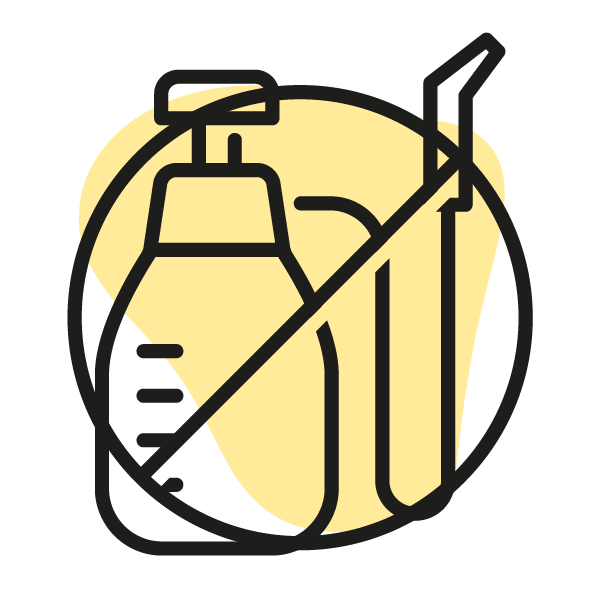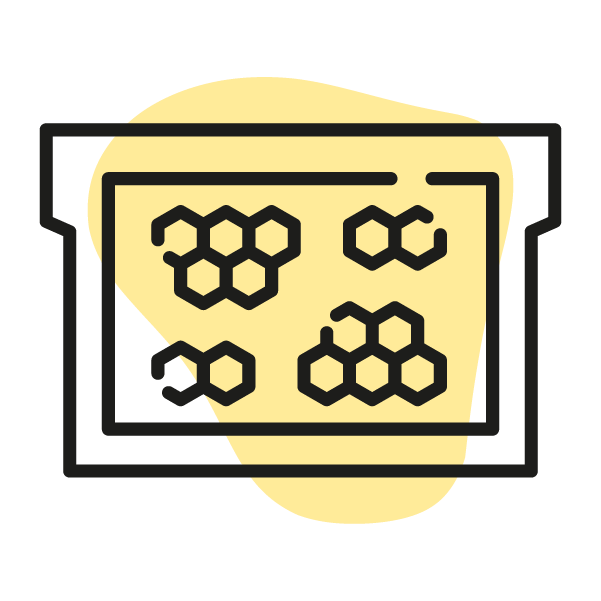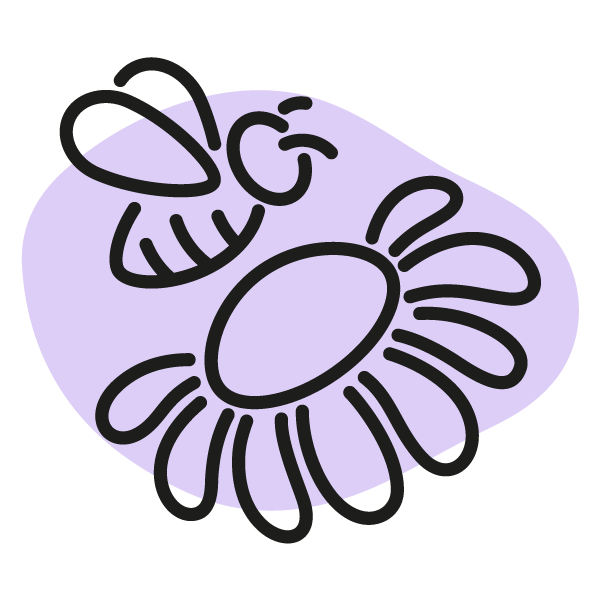Help The Bees
UK bees are unable to travel across vast urban areas without frequently stopping to feed on pollen and nectar. By planting pollinator-friendly plants in our outside spaces, from gardens to window boxes or a single flowerpot on your doorstep, we would contribute to the growth of urban green highways and support UK bees. Without bees there would be no crops or flowers.
An urban green highway is a collection of spaces dedicated to growing plants that are nectar and pollen rich. These highways allow bees to travel successfully with little disturbance.
The National Trust pollinator wildflower mix contains native British wildflower seeds and is perfect for sowing in your own part of an urban green highway.
Boxes covers approx. 4m2 and contain many varieties of wild flowers, such as Birdsfoot Trefoil, Black Medick, Common Knapweed, Corn Chamomile, Corn Cockle, Corn Marigold, Cornflower, Cowslip, Field Forget Me Knot, Field Poppy Foxglove, Goatsbeard, Greater Knapweed, Hoary Plantain, Lady’s Bedstraw, Meadow Buttercup, Musk, Night-flowering Catchfly, Ox-eye Daisy, Red Campion, Ribwort Plantain, Salad Burnet, Self Heal, Sorrel, White Campion, Wild Carrot, Wild Clary, Yarrow and Yellow Rattle.
Honey bees have medium length tongues and prefer to feed on open, single petal flowers which enable them to easily access the nectar within. Wheresas Bumblebees can gather pollen from more tightly growing flowers by dislocating their wings so that they can crawl inside!
Bees need plants with spring nectar and pollen such as Hellebore and Snowdrop. During the summer, hardy shrubs such as Escallonia, Cytisus, Hypericum, Ceanothus, Buddleja and Single Flowered Roses, are a great source of nectar. Perennials and annuals that you can plant to feed bees include Cosmos, Campanula, Lavender, Slavia, Rudbeckia and Verbena.
10 Ways to Help the Bees
1. Plant a Bee Garden
One of the largest threats to bees is a lack of safe habitat where they can build homes and find a variety of nutritious food sources. By planting a bee garden, you can create a habitat corridor with plants that are rich in pollen and nectar. You don’t need a ton of space to grow bee-friendly plants — gardens can be established across yards and in window boxes, flower pots, and planters. You can also get involved with local organisations and governments to find opportunities to enrich public and shared spaces.

2. Go Chemical-Free for Bees
Synthetic pesticides, fertilisers, herbicides, and neonicotinoids are harmful to bees, wreaking havoc on their sensitive systems. Avoid treating your garden and green spaces with synthetics. Instead, use organic products and natural solutions such as compost to aid soil health and adding beneficial insects that keep pests away like ladybugs and praying mantises.

3. Become a Citizen Scientist
Join a global movement to collect data on our favorite pollinators! Gather photos and other information about native bees and share them with friends and family.

4. Provide Trees for Bees
Did you know that bees get most of their nectar from trees? When a tree blooms, it provides hundreds — if not thousands — of blossoms to feed from. Trees are not only a great food source for bees, but also an essential habitat. Tree leaves and resin provide nesting material for bees, while natural wood cavities make excellent shelters. With deforestation and development on the rise, you can help bolster bee habitats by caring for trees and joining tree-planting parties in your area.

5. Create a Bee Bath
Bees work up quite a thirst foraging and collecting nectar. Fill a shallow bird bath or bowl with clean water, and arrange pebbles and stones inside so that they break the water’s surface. Bees will land on the stones and pebbles to take a long, refreshing drink.

6. Build Homes for Native Bees
Did you know that, with the exception of honeybees, most bees are solitary creatures? 70% of solitary bees live underground, while 30% live in holes inside of trees or hollow stems. Species like bumble bees build their nests in undisturbed land, and you can provide safe haven for them by leaving an untouched plot of land for them in your garden! “Bee condos” — which have small tube “apartments” — allow species like mason bees to take up residence. They’re easy to make or purchase.

7. Give Beehives and Native Bee Homes
Keep honeybees, nurture native bees, or help gardens and schools around the UK to grow food and strengthen local environments.

8. Teach Tomorrow’s Bee Stewards
Inspire the next generation of eco citizens with guides, lessons, and activities to get them buzzed about bees!

9. Host a Fundraiser
Host a fundraiser online or do something you love to raise funds for conservation programs. Fundraising events create community building and information sharing opportunities that inspire while raising funds for Bee Conservancy programs. It’s an easy, fun way to make a serious impact.

10. Support Local Beekeepers and Organisations
Local beekeepers work hard to nurture their bees and the local community. The easiest way to show your appreciation is to buy locally-made honey and beeswax products. Many beekeepers use products from their hives to create soaps, lotions, and beeswax candles. Plus, local honey is not only delicious — it is made from local flora and may help with seasonal allergies! You can also give time, resources, and monetary donations to local beekeeping societies and environmental groups to help their programs grow.

